Usuario "moliver"
Se han encontrado 73 Coincidencias
Competitive Programmer’s Handbook
Programación avanzada para competencias
62 Visitas | 77 Descargas | 2019-10-30 17:16:44 | moliver
The purpose of this book is to give you a thorough introduction to competitive programming. It is assumed that you already know the basics of programming, but previous background on competitive programming is not needed. The book is especially intended for students who want to learn algorithms and possibly participate in the International Olympiad in Informatics (IOI) or in the International Collegiate Programming Contest (ICPC). Of course, the book is also suitable for anybody else interested in competitive programming. It takes a long time to become a good competitive programmer, but it is also an opportunity to learn a lot. You can be sure that you will get a good general understanding of algorithms if you spend time reading the book, solving problems and taking part in contests. The book is under continuous development. You can always send feedback on the book to ahslaaks@cs.helsinki.fi.
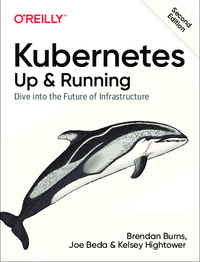
Kubernetes Up and Running
Kubernetes Up and Running
59 Visitas | 49 Descargas | 2020-03-17 19:48:37 | moliver
Kubernetes would like to thank every sysadmin who has woken up at 3 a.m. to restart a process. Every developer who pushed code to production only to find that it didn’t run like it did on their laptop. Every systems architect who mistakenly pointed a load test at the production service because of a leftover hostname that they hadn’t updated. It was the pain, the weird hours, and the weird errors that inspired the development of Kubernetes. In a single sentence: Kubernetes intends to radically simplify the task of building, deploying, and maintaining distributed systems. It has been inspired by decades of real-world experience building reliable systems and it has been designed from the ground up to make that experience if not euphoric, at least pleasant. We hope you enjoy the book!
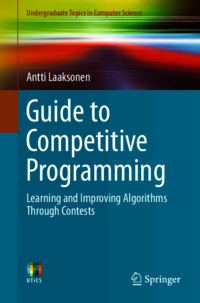
Guide to Competitive Programming
Guide to Competitive Programming
79 Visitas | 98 Descargas | 2020-05-24 23:19:14 | moliver
Guide to Competitive Programming Learning and Improving Algorithms Through Contests The purpose of this book is to give you a comprehensive introduction to modern competitive programming. It is assumed that you already know the basics of pro- gramming, but previous background in algorithm design or programming contests is not necessary. Since the book covers a wide range of topics of various difficulty, it suits both for beginners and more experienced readers.
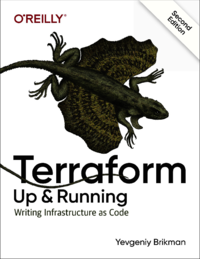
Terraform
Terraform is an open source tool that allows you to define your infrastructure as code
70 Visitas | 44 Descargas | 2020-05-28 15:59:27 | moliver
Terraform is an open source tool created by HashiCorp that allows you to define your infrastructure as code using a simple, declarative language and to deploy and manage that infrastructure across a variety of public cloud providers (e.g., Amazon Web Services, Microsoft Azure, Google Cloud Platform, DigitalOcean) and private cloud and virtualization platforms (e.g., OpenStack, VMWare) using a few commands.
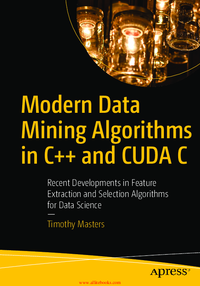
Modern Data Mining Algorithms in Cpp and CUDA C
Discover a variety of data-mining algorithms that are useful for selecting small sets of important features from among unwieldy masses of candidates, or extracting useful features from measured variables.
51 Visitas | 39 Descargas | 2020-10-04 12:14:01 | moliver
As a serious data miner you will often be faced with thousands of candidate features for your prediction or classification application, with most of the features being of little or no value. You’ll know that many of these features may be useful only in combination with certain other features while being practically worthless alone or in combination with most others. Some features may have enormous predictive power, but only within a small, specialized area of the feature space. The problems that plague modern data miners are endless. This book helps you solve this problem by presenting modern feature selection techniques and the code to implement them.
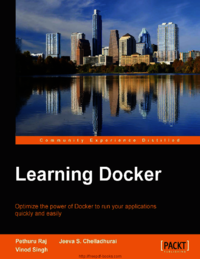
Learning Docker
Optimize the power of Docker to run your applications quickly and easily
76 Visitas | 38 Descargas | 2020-10-04 12:23:25 | moliver
Docker is an open source containerization engine that offers a simple and faster way for developing and running software. Docker containers wrap software in a complete filesystem that contains everything it needs to run, enabling any application to be run anywhere – this flexibily and portabily means that you can run apps in the cloud, on virtual machines, or on dedicated servers. This book will give you a tour of the new features of Docker and help you get started with Docker by building and deploying a simple application. It will walk you through the commands required to manage Docker images and containers. You’ll be shown how to download new images, run containers, list the containers running on the Docker host, and kill them. You’ll learn how to leverage Docker’s volumes feature to share data between the Docker host and its containers – this data management feature is also useful for persistent data. This book also covers how to orchestrate containers using Docker compose, debug containers, and secure containers using the AppArmor and SELinux security modules.
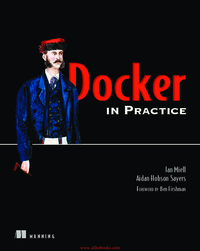
Docker in Practice
An open source container system, Docker makes deploying applications painless and flexible. Docker is powerful and simple to use, and it makes life easier for developers and administrators alike providing shorter build times, fewer production bugs, and effortless application roll-out.
68 Visitas | 39 Descargas | 2020-10-04 12:29:48 | moliver
Docker in Practice is a hands-on guide that covers 101 specific techniques you can use to get the most out of Docker. Following a cookbook-style Problem/Solution/Discussion format, this practical handbook gives you instantly useful solutions for important problems like effortless server maintenance and configuration, deploying microservices, creating safe environments for experimentation, and much more. As you move through this book, you’ll advance from basics to Docker best practices like using it with your Continuous Integration process, automating complex container creation with Chef, and orchestration with Kubernetes.
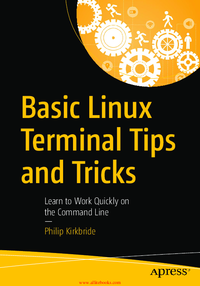
Basic Linux Terminal Tips and Tricks
Learn command line tricks, programs, and hacks you can use day to day as a Linux user, programmer, and system administrator. When you interact with the digital world, you can’t go far without interacting with Linux systems. This book shows you how to leverage its power to serve your needs.
62 Visitas | 62 Descargas | 2020-10-04 12:41:25 | moliver
Many users know "top" is installed on almost all Linux machines, but did you know with a few keystrokes you can customize it specifically for your needs? Stuck using `cd` and `ls` commands for navigating file systems? This book looks at how you can use Ranger to quickly navigate through multiple levels of folders, and quickly run bash commands without ever leaving the terminal. We also suggest programs that can be used for common tasks such as finding which programs are using the most processing, data download/upload, and file space. You’ll know how to quickly connect to remote machines and run your commonly needed jobs in a keystroke or even on auto-pilot. With Basic Linux Terminal Tips and Tricks you'll be equipped with a wide range of tools that can be used for daily work and maintenance on all sorts of Linux systems including servers, desktops, and even embedded devices.
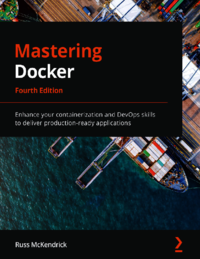
Mastering Docker, 4th Ed
Docker is a game-changer when it comes to modern applications' architecture and how they are deployed. It has now grown into a key driver of innovation beyond system administration, and it has had a significant impact on the world of web development and beyond. But how can you make sure you're keeping up with the innovations it's driving? How can you be sure you're using it to its full potential?
68 Visitas | 57 Descargas | 2020-10-24 12:43:42 | moliver
This book shows you how; it not only demonstrates how to use Docker more effectively, it also helps you rethink and re-imagine what's possible with Docker. You will cover basic topics, such as building, managing, and storing images, along with best practices, before delving into Docker security. You'll find everything related to extending and integrating Docker in new and innovative ways. Docker Compose, Docker Swarm, and Kubernetes will help you take control of your containers in an efficient way. By the end of the book, you will have a broad and detailed understanding of exactly what's possible with Docker and how seamlessly it fits into your local workflow, highly available public cloud platforms, and other tools.
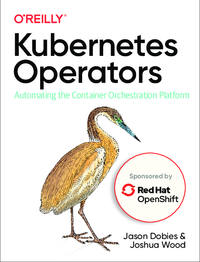
Kubernetes Operators
Automating the Container Orchestration Platform
47 Visitas | 48 Descargas | 2020-12-04 19:37:15 | moliver
“Kubernetes has emerged as the world’s most powerful container orchestration platform, but its true power is hidden behind an extensible API and automation framework that will redefine how future platforms are built and operated; this book is the missing manual.”
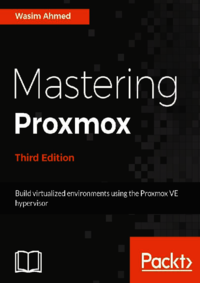
Mastering Proxmox - Third Edition: Build virtualized environments using the Proxmox VE hypervisor
Virtualizacion con Proxmox
73 Visitas | 33 Descargas | 2023-12-29 16:35:55 | moliver
Based on the foundation laid out by the first edition and second edition, this book, Mastering Proxmox, Third Edition, brings updated information and details of the new features of Proxmox VE 5.0. Since the first edition of this book was published, Proxmox has been through many changes. With this third edition, I am confident that readers will be able to upgrade their skills while building and managing even better Proxmox clusters. This book shows the inner workings of Proxmox, including virtual network components, shared storage systems, the Proxmox firewall, high availability, and other features.
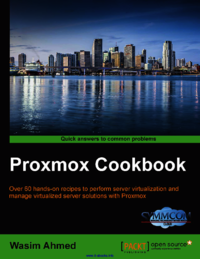
Proxmox Cookbook
Virtualizacion con Proxmox Cookbook
45 Visitas | 38 Descargas | 2023-12-29 16:38:06 | moliver
Proxmox is one of the biggest kept secrets in the world of virtualization. It stands tall with other major virtualization players, such as VMWare, Xen, Hyper-V, and so on. Since the first release of Proxmox in 2005, it has become the standard for open source hypervisors. It is loaded with great features, such as clustering, High Availability, major storage plugins, firewalls, full KVM/OpenVZ support, and a price that cannot be beaten by any other virtualization product in the industry. Proxmox provides a rock solid platform to build virtual environments that are scalable to any size and can be managed entirely from a single GUI. In a matter of minutes, a standard Proxmox cluster can be raised and brought into production without any licensing costs.

Proxmox High Availability
Virtualizacion Proxmox High Availability
66 Visitas | 43 Descargas | 2023-12-29 16:39:41 | moliver
Nowadays, the number of network services is rapidly increasing, due to which service availability has become a concern. With the help of the easy-to-use tools provided by Proxmox, users can easily improve their service by building their own clusters. The support of various storage options provides flexibility with different forms of network storage.
Contribuir
Usted puede contribuir con Libros UCLV, es importante para nosotros su aporte..
Contribuir